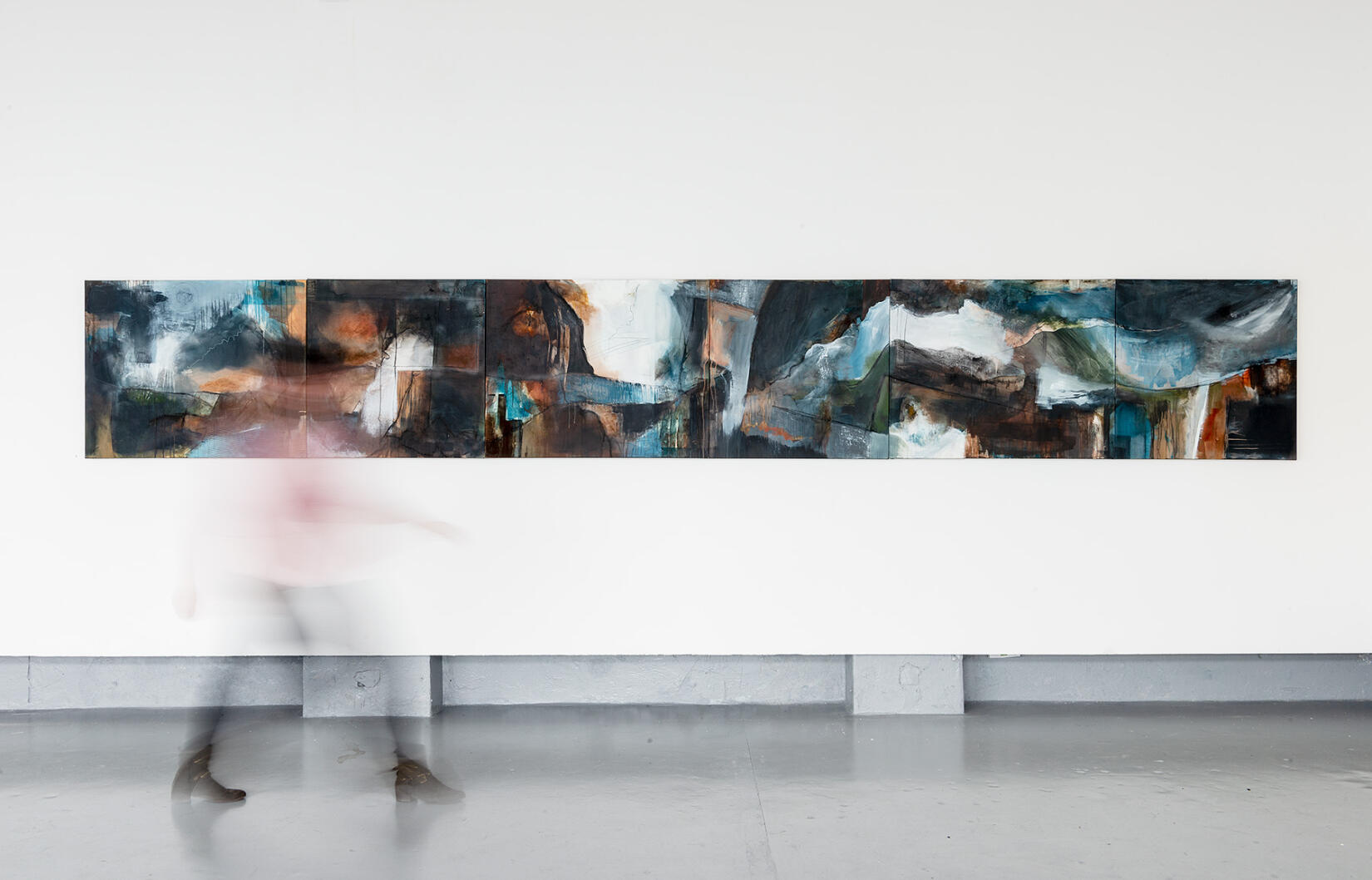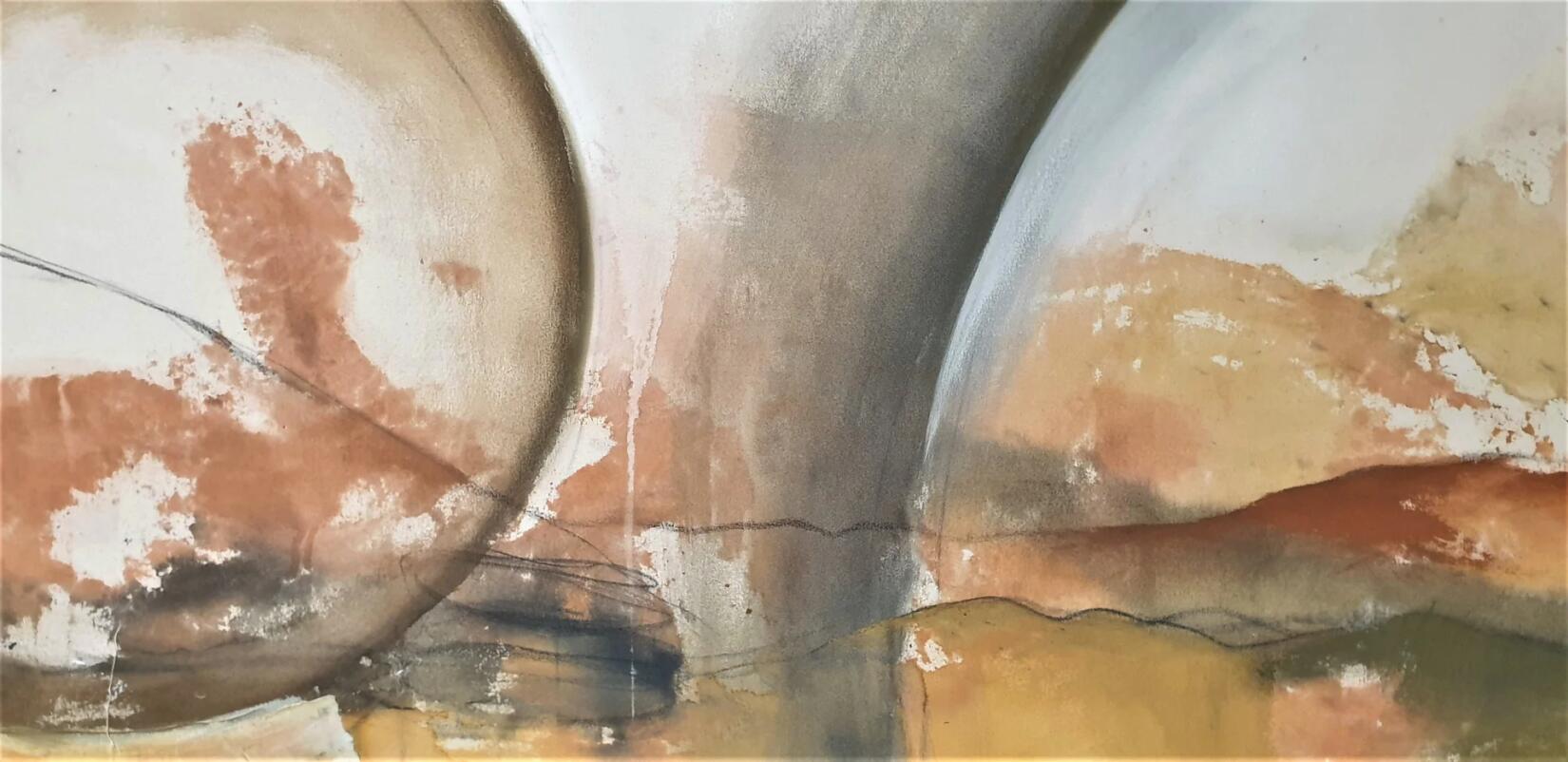Meet: Natalie Day
Artist in Residence
From ancient settlements to abandoned mines and rugged moorland, natural world artist Natalie Day’s dramatic, semi-abstract work reveals a raw, unpolished Cornwall.
Painting with pigments gathered by hand in the wild – red clay, yellow soil, white chalk – her canvases encourage an elemental connection with our troubled planet, meditating on the scars we leave behind and the stories the land can tell.
With Bude-based Natalie’s Watergate Bay artist residency just around the corner, we sat down to discuss drastic career changes, reigniting her love of the coastline, and why Earth Day 2024 sets the perfect scene for her residency…
“I grew up in a little village called Marhamchurch on Cornwall’s north coast where the wild expanse of countryside and the sea were my back garden. Back in the 1980s, we could roam freely as long as we were home in time for tea.
When I was a child I had two career ambitions: I wanted to be an artist or a jockey. I quickly grew too tall to be a jockey, so I thought, ‘OK, I’ll be an artist instead!'
I haven't always been a full-time artist, though. After my art foundation year at Falmouth. I got bogged down by people's negative reactions – saying, ‘Art isn’t a real career, you’ll never make money from it,’ – that sort of thing. So I entered corporate London and stayed there for years. But then the art (and Cornwall!) pulled at me again, so I took some classes, and I got a studio.
Creative block kicked in when I tried to change my style to something more commercial and mainstream. I’ve realised now that the best art I can make is the art I want to make. I’d rather paint what feels true to me, and then if it resonates with people, brilliant. Painting to other people’s expectations is the worst thing you can do, I think.
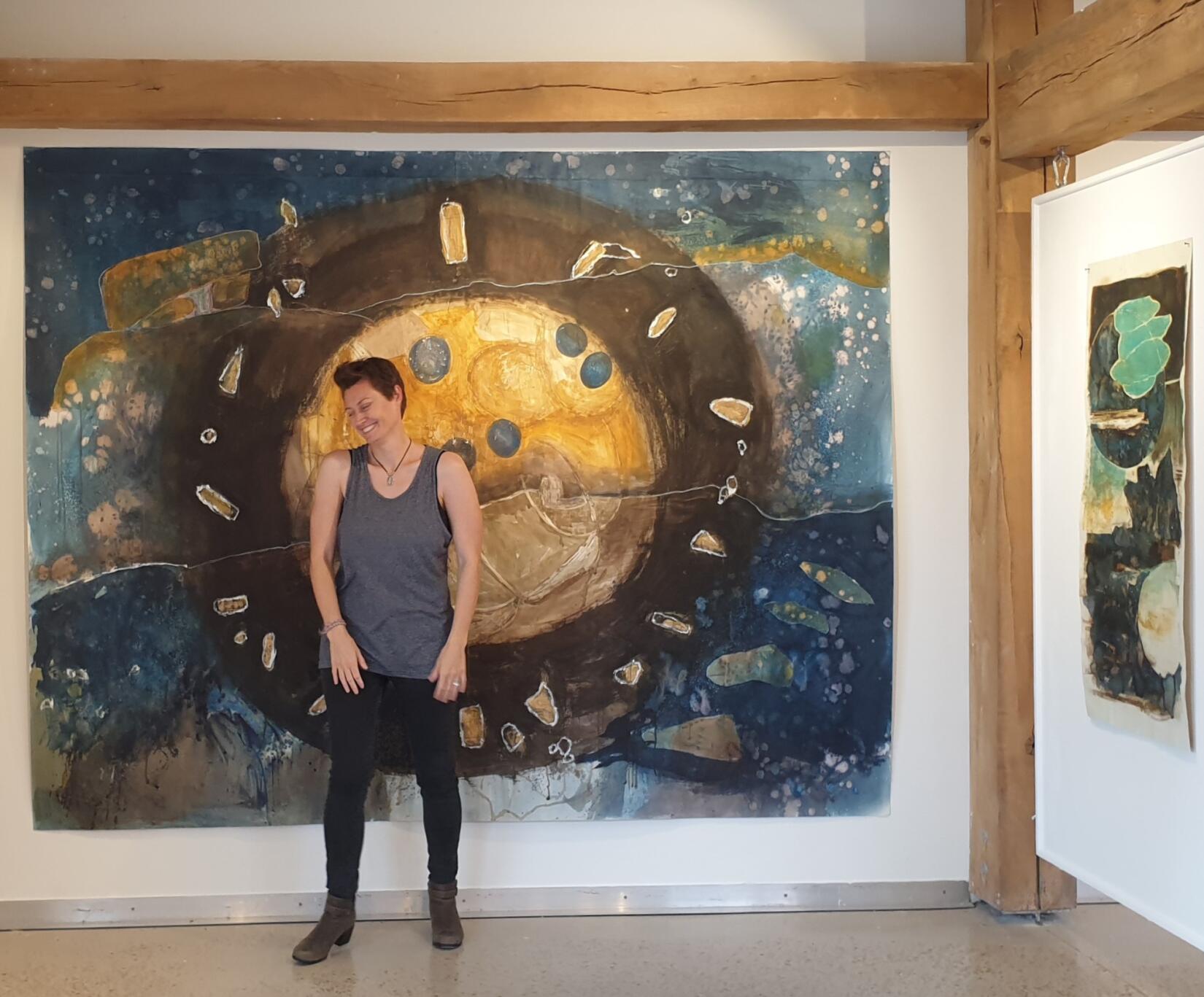
Sacred Landscapes by Natalie Day
I have a master’s degree in chiropractic. I qualified, was in practice for a few years, and then I just burnt out. The more I got back into my art, the more I struggled with having to shift into the other, analytical, scientific way of thinking. It started to become a conflict, and I needed the creative brain space to have an idea and run with it. I so desperately wanted to be a full-time artist again, and to move back to Cornwall. It hit me really hard that I was on the wrong path. So, after a lot of life overhauling, I made the change happen. I haven’t looked back since.
“My work encourages people to look down at what they’re walking on. We tend to be oblivious to the rich natural palette all around us, but once you start to notice the colours under your feet, it’s mindblowing.”
I’m now based in Bude, and my studio is just a short walk from my home. I’ve always loved being by the coast, but interestingly, when I came back to Cornwall, it was the land – and especially the moors – that I was drawn to with my work.
I became fascinated with that notion of our impact on the land, and how, if the land could talk, what would it say? I try to tap into something more primal with my art – and that desire to take care of our environment. The land can nurture us, but it needs us to nurture it back.
One of the key themes within my work is this sense of expansiveness. Here in Cornwall, you look one way and it’s the moors and you look the other way and it’s the sea. That brings a feeling of freedom – you’re not hemmed in or restricted at all.
The Cornish moors are wild and rugged – and very un-touristy. It’s a side of Cornwall that people don’t see so much or tend to visit. You’ve got Bodmin Moor in north Cornwall with its ancient settlements, then further down you’ve got West Penwith. Peppered throughout that you’ve got all the old mining country, which leads to amazing excavated landscapes as well as lots of natural pigments in the soil because of the waste that’s been left behind.
I made a conscious choice to reduce my use of plastic-based products like acrylic paints because of all the issues around microplastics and pollution. When you wash brushes with acrylic paint on them you’re washing microplastics down the sink, so you have to be mindful of how you dispose of them.
I paint mostly with natural pigments, or ‘earth pigments’ – gathered, quite literally, from nature and the ground. I tend to have a core palette of colours I use for all my projects, and then some location-specific pigments gathered on site to reflect the colours of that particular landscape. I’ve got some lovely Bideford black and some chalk from Oxfordshire, plus a few reddish colours that I gathered from further down in Cornwall.
I always try to gather the natural pigments as responsibly as I can. If there’s something that’s already broken off or fallen down, I’ll pick that up rather than digging into the earth or excavating the land.
For a whole year, I used only natural materials and nothing else in my art. It was absolutely brilliant because it really challenged me. The first six months were a learning curve, with me working out how to actually use the natural pigment, because it’s such a different medium to acrylic paint and behaves so differently. Once I became familiar with how the natural paint worked and its properties I started to really enjoy it.
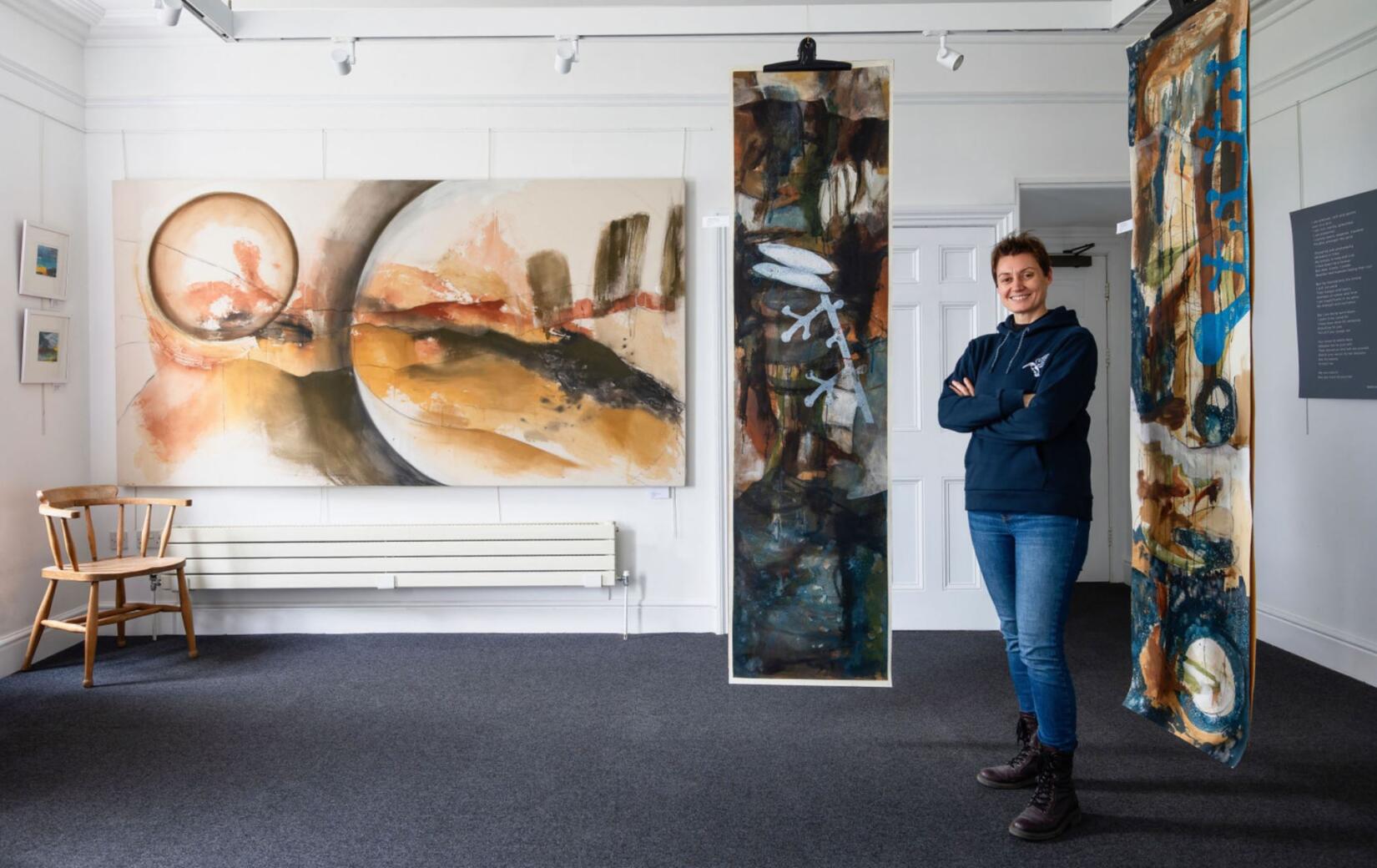
This Land by Natalie Day, photo credit: John Proudfoot
Painting with earth pigments is a very considered and intentional process; they’re a finite resource so you can’t go wild and chuck a load of paint all over the place. I have to mix the earth pigments up fresh to order, grinding up just as much as I need, and only then adding the plant-based binder and then applying the paint to the canvas.
One thing my work does is encourage people to look down at what they’re walking on. We tend to be oblivious to the rich natural palette all around us, but once you start to notice the colours under your feet it’s really quite mind-blowing. We don’t have to synthesise everything and make it artificial – we can use what already exists in nature.
“Whether it’s using natural paints, being mindful of how I dispose of materials, or painting landscapes with great ancestral significance, my work is an extension of the Earth Day idea that we need to celebrate and protect our planet.”
I couldn’t have asked for a better home for the set of paintings in Zacry’s restaurant at Watergate Bay Hotel. All the natural materials that Matt at Dynargh Design has used in the restaurant interior really complement my paintings and vice versa. There’s this lovely spot where one of the wave pictures is facing out to sea and right next to it is a glazed door, so you’ve got my picture and then the reflection of the sea in the door right next to it.
My upcoming residency at Watergate Bay has the potential to reignite my love of painting the coast, but bring it to a new level and unlock a new perspective. I’ve never done that traditional blue sky, blue sea, sandy beach type painting – so it’s going to be Watergate Bay but from my unique perspective, looking at it as an ancient landscape, rather than a seaside town or holiday destination.
The idea is that people can come and join in with my work while I’m around the hotel if they want to. So, if I’m doing some drawing on the beach, and people want to come and have a go, they can. I want people to feel comfortable to come and approach me and try something new.
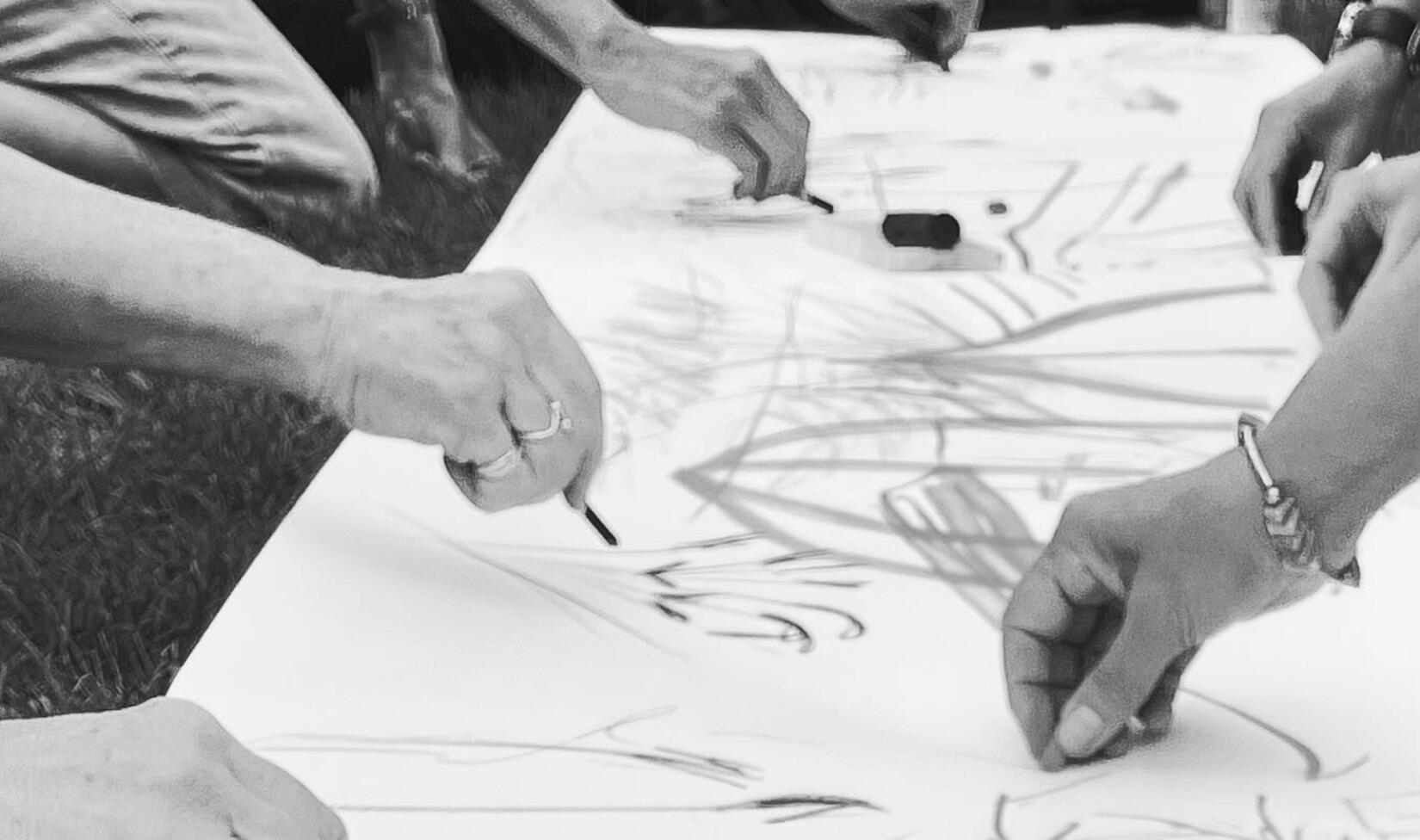
Earth Day (22 April) falls during my Watergate Bay residency. Whether it’s using natural paints, being mindful of how I dispose of materials, or painting landscapes with great ancestral significance, my work is an extension of the Earth Day idea that we need to celebrate and protect our planet.
This year, the theme for Earth day is ‘Planet vs. Plastics’, so I thought it would be a nice idea to arrange a beach clean during my time at Watergate Bay. I might even take some of the plastics we pick up and find a way to integrate them into the work. Because the cliffs around Watergate are really hard (not sandstone like round here in Bude where I can make paint from them), I might not be able to find local natural pigments, but I could gather some materials that have been left by people and use them to influence the work. So the work could end up looking quite different to what I’m doing now, which I’m excited about!
I’m going to try not to have too much of a brief, and just be very responsive in the days I’m there to what happens. If I can tap into even just a few people on that more primal level through my artwork, and re-establish that connection with the landscape and our surroundings, then I’ll be happy.
Meet Natalie
Natalie will be working around the hotel and on the beach during her April residency – 21–25 April. Please come and say hello.
During her residency, Natalie will be sketching, painting and writing around the hotel and guests. She will be engaging with guests, getting involved in an Earth Day beach clean, creating a collaborative piece of work for our guests to work on, and a team workshop.
You can see a selection of her work on the walls at Zacry’s restaurant.
Discover more
Be the first to know
We'd love to keep in touch and send you the latest news, events, competitions and offers from the Bay. Sign up to receive our e-newsletter.

